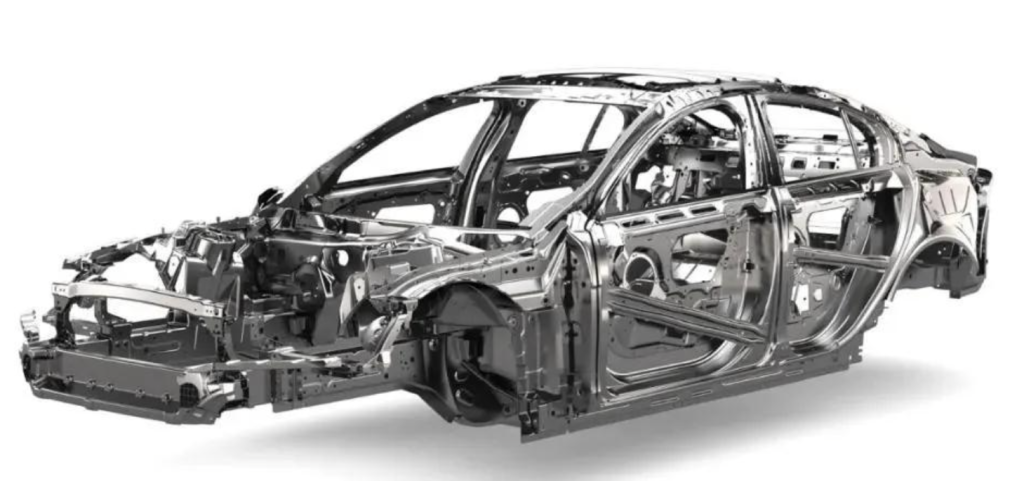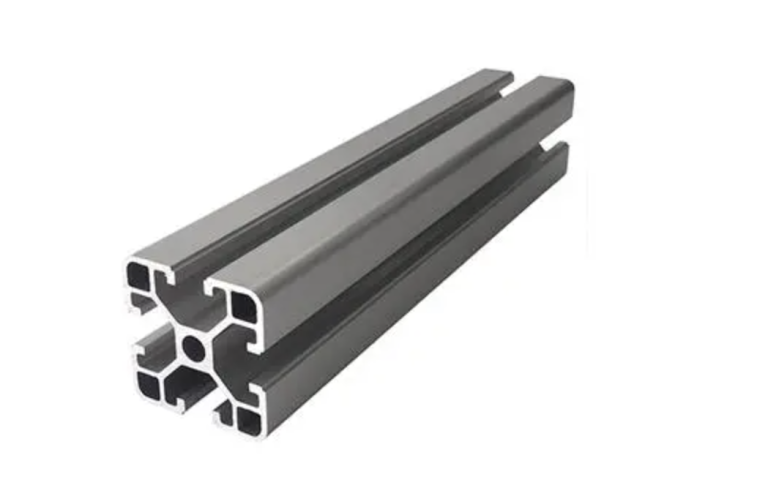What is 2024 Aluminum Alloy? A Complete Guide

2024 aluminum is an alloy made from aluminum, copper, and magnesium. It offers high strength and moderate heat resistance. This alloy can be strengthened through heat treatment, but its corrosion resistance is low.
Main Alloying Elements of 2024 Aluminum
2024 aluminum relies on a specific mix of elements to achieve its strength and performance.
Copper (Cu)
- Typical content: 3.8%–4.9%
- Function: Copper increases strength and hardness.
- Example: Aircraft wing structures use 2024 aluminum for its copper-driven load capacity.
Magnesium (Mg)
- Typical content: 1.2%–1.8%
- Function: Magnesium improves toughness and plasticity.
- Example: High-speed train components benefit from the alloy’s ability to absorb vibration without cracking.
Manganese (Mn)
- Typical content: 0.3%–0.9%
- Function: Manganese refines grain structure and increases wear resistance.
- Example: Manganese helps maintain shape and resist fatigue in long-term structural use.
Quick Reference Table: 2024 Aluminum Alloying Elements
| Element | Content (%) | Main Benefit | Example Application |
|---|---|---|---|
| Copper | 3.8–4.9 | Strength, hardness | Aircraft wing structures |
| Magnesium | 1.2–1.8 | Toughness, plasticity | High-speed train parts |
| Manganese | 0.3–0.9 | Stability, wear resistance | Long-term structural components |
The precise combination of copper, magnesium, and manganese gives 2024 aluminum its high strength, toughness, and reliability. This alloy is a top choice when every gram matters and failure is not an option.

2024 Aluminum Alloy Properties
2024 aluminum delivers high strength and reliable performance in demanding applications.
High Strength
- Tensile strength ranges from 400 MPa to 470 MPa, depending on temper.
- Yield strength falls between 270 MPa and 324 MPa.
- The alloy supports heavy loads without permanent deformation.
Toughness and Machinability
- 2024 aluminum absorbs impact and resists cracking under repeated stress.
- The alloy machines well after quenching and cold work, supporting precise fabrication.
- Machinability decreases after annealing, which can increase tool wear and reduce cutting accuracy.
Mechanical Properties Table
| Property | Typical Value (T3/T351) | Application Example |
|---|---|---|
| Tensile Strength | 400–470 MPa | Aircraft fuselage panels |
| Yield Strength | 270–324 MPa | Wing spars and structural frames |
| Toughness | High | Fasteners and load-bearing parts |
| Machinability | Good (quenched/cold worked), Reduced (annealed) | Precision components before heat treatment |
Key Points
- 2024 aluminum offers a strong balance of strength and toughness.
- The alloy performs best when machined before annealing.
Its properties make it a top choice for aerospace and high-stress structural parts.
2024 Aluminum Physical Properties
2024 aluminum offers a combination of lightweight, strength, and stability. The following properties define its performance in engineering applications.
Density
- Density ranges from 2.73 to 2.78 g/cm³ (0.098–0.100 lb/in³).
- This low density reduces total component weight in aerospace and automotive designs.
Modulus of Elasticity
- Modulus of elasticity measures 71–73 GPa.
- The alloy resists bending and springs back to its original shape after force is removed.
Hardness
- Brinell hardness typically falls between HB120 and HB150, depending on heat treatment.
- Tempers like 2024-T3 and T4 reach hardness values near HB120, which improves wear resistance.
Coefficient of Thermal Expansion
- The thermal expansion coefficient is 23–23.8 × 10⁻⁶ /°C.
- The alloy expands moderately with temperature changes, so engineers account for this in precision assemblies.
Electrical Conductivity
- Electrical conductivity measures 30–31.9 MS/m (about 30% IACS).
- 2024 aluminum supports applications that require both strength and efficient current flow, such as connectors and frames.
Summary Table: Physical Properties of 2024 Aluminum
| Property | Typical Value | Application Example |
|---|---|---|
| Density | 2.73–2.78 g/cm³ | Aircraft panels, automotive frames |
| Modulus of Elasticity | 71–73 GPa | Structural beams, load-bearing parts |
| Brinell Hardness | 120–150 HB | Moving parts, wear surfaces |
| Thermal Expansion | 23–23.8 × 10⁻⁶ /°C | Precision assemblies, temperature cycling |
| Electrical Conductivity | 30–31.9 MS/m | Conductive structural components |
These physical properties help engineers select 2024 aluminum for projects that demand low weight, high stiffness, and reliable performance under changing conditions.
2024 Aluminum Applications
2024 aluminum supports industries that require strong, lightweight, and conductive materials.
Automotive Manufacturing

Automakers use 2024 aluminum in body panels, chassis frames, and engine mounts. The alloy lowers vehicle weight, which improves fuel efficiency and acceleration. High-performance cars often feature 2024 aluminum in suspension parts for added strength and agility.
Rail Transportation
Manufacturers build high-speed train and subway car bodies, doors, and seat frames with 2024 aluminum. The alloy’s toughness absorbs vibration and resists damage from repeated loading, helping trains last longer and operate more efficiently.
Power Transmission and Distribution
2024 aluminum forms busbars, cable bridges, and radiators in electrical systems. Its conductivity and heat dissipation prevent overheating and extend equipment life.
Communication Equipment
Engineers use 2024 aluminum for antennas, filters, and connectors in base stations and network hardware. The alloy provides electrical conductivity and efficient heat management. Its lightweight also makes installation easier and reduces structural load.
Application Overview Table
| Application Area | Example Components | Key Benefit |
|---|---|---|
| Automotive | Body panels, chassis, mounts | Weight reduction, fuel savings |
| Rail Transportation | Car bodies, doors, seats | Durability, energy efficiency |
| Power Transmission | Busbars, cable bridges | Conductivity, heat dissipation |
| Communication Equipment | Antennas, connectors, filters | Signal flow, cooling |
2024 aluminum delivers measurable improvements in speed, efficiency, and reliability. Its properties make it a preferred material for vehicles, trains, power systems, and communication networks.
Final Thoughts
2024 aluminum combines high strength, toughness, and low weight. These features help engineers build lighter vehicles, durable train components, and efficient power transmission equipment.
In the automotive industry, 2024 aluminum reduces vehicle weight. This reduction improves fuel efficiency and sharpens performance. Rail manufacturers use the alloy for high-speed train bodies and doors, relying on its ability to handle vibration and repeated stress. Electrical and communication systems benefit from its conductivity and heat management, which support stable operation and extend service life.
As industries demand lighter and stronger materials, 2024 aluminum will play a larger role. Its proven performance in aerospace and transportation points to wider use in advanced engineering and new technologies.
For projects where every gram and detail matter, 2024 aluminum delivers reliable results. Its track record shows strong potential for future applications that require strength, speed, and durability.
Hugh Aluminum – A Leading Manufacturer of Extruded Aluminum Profile!






